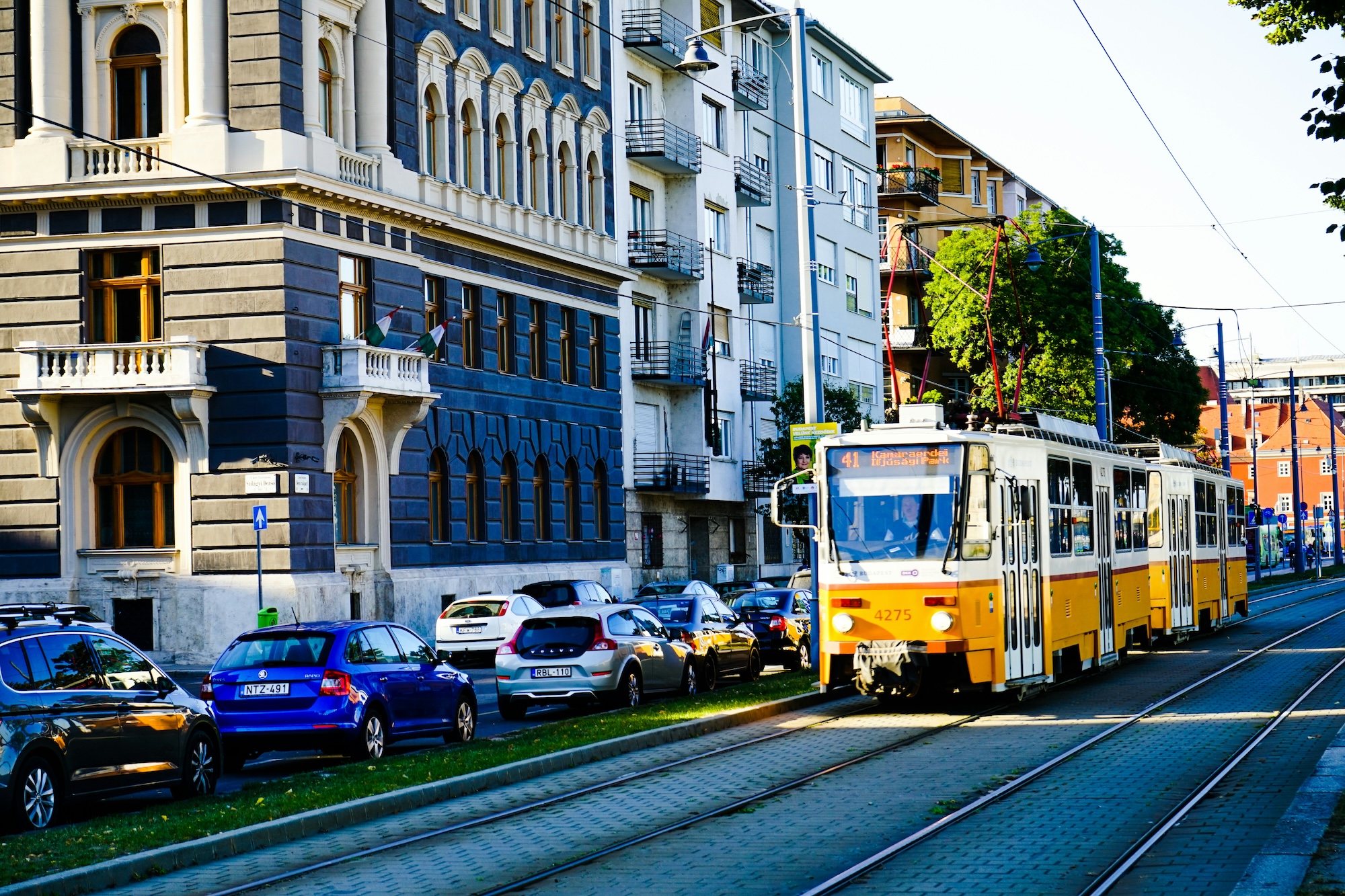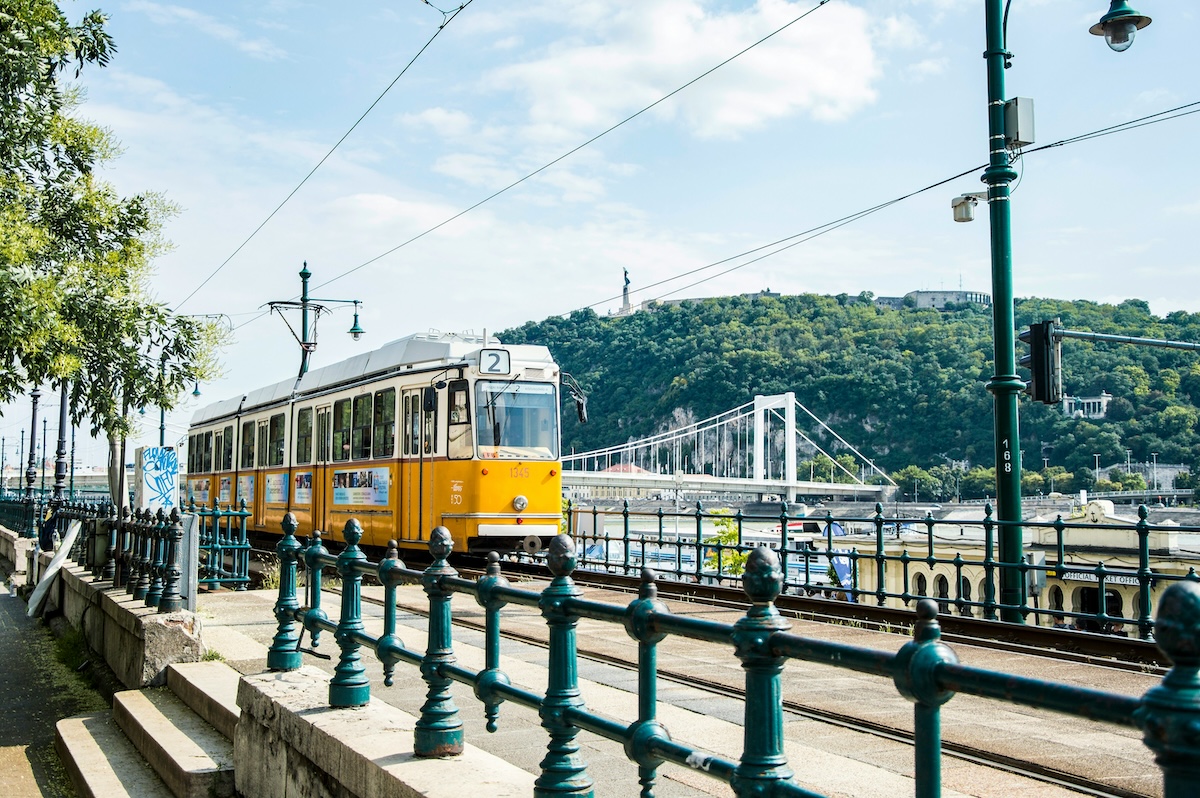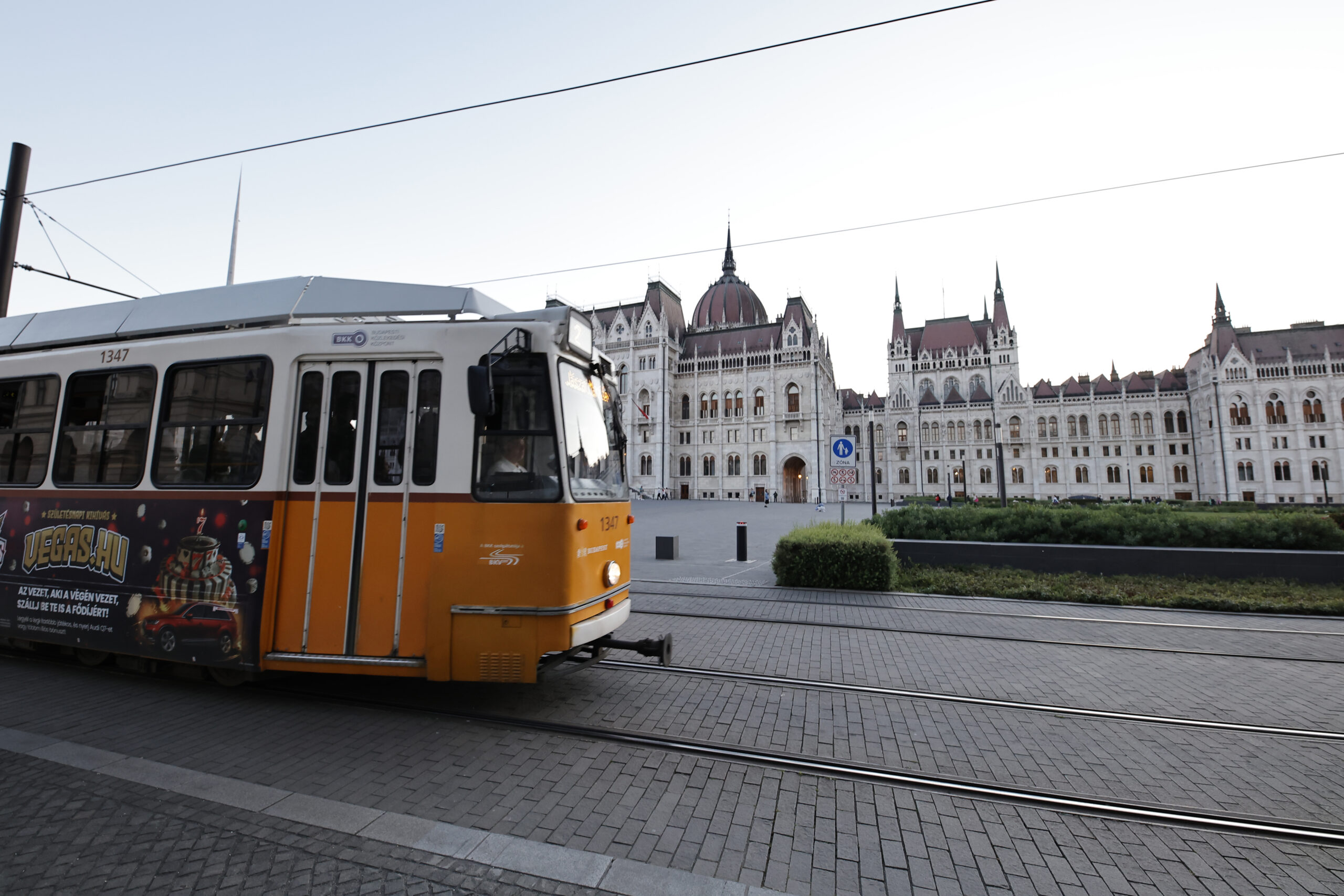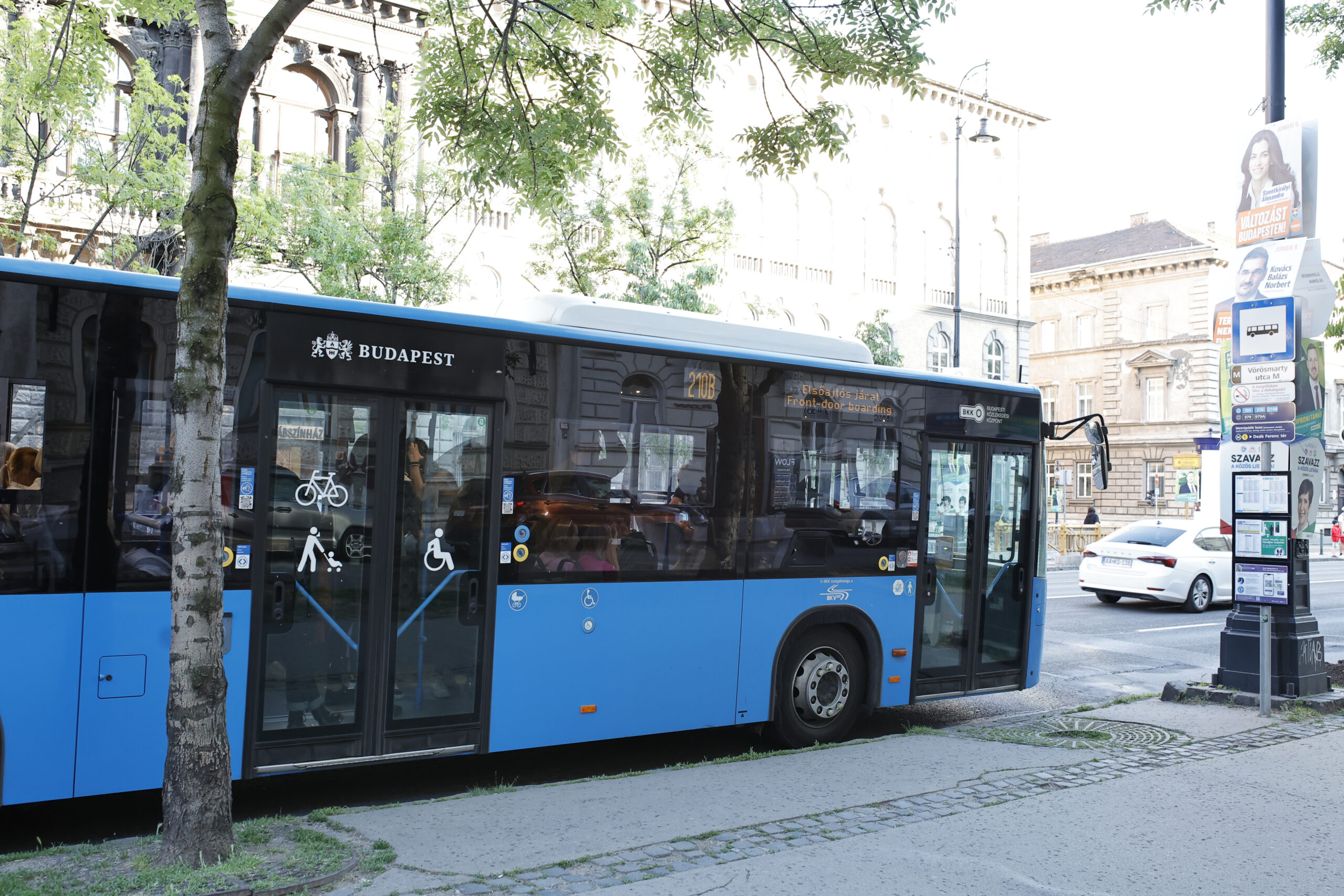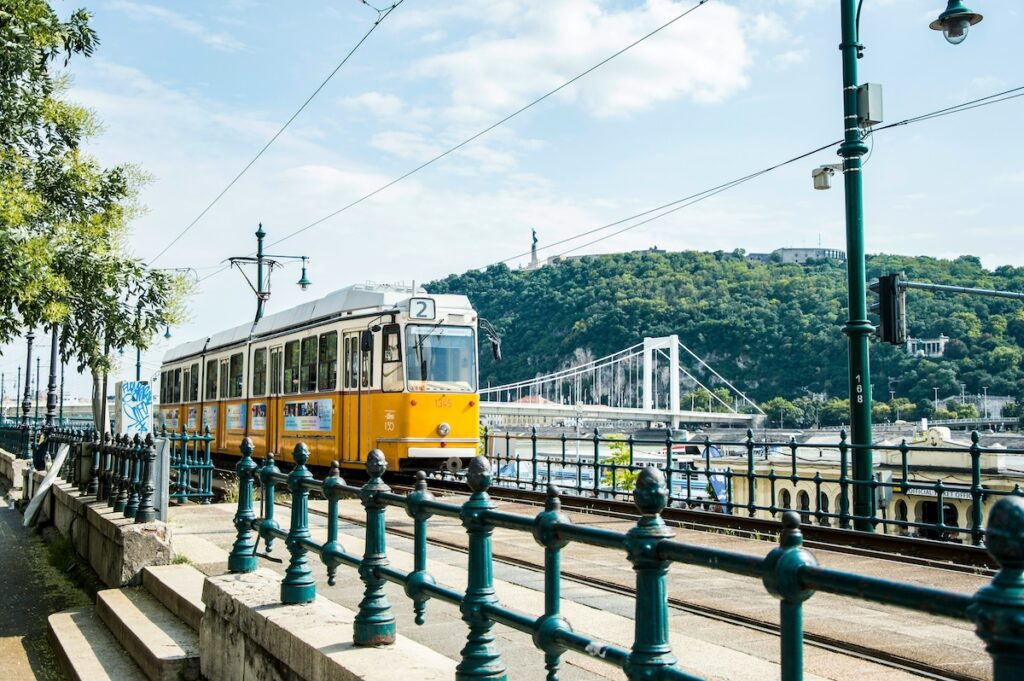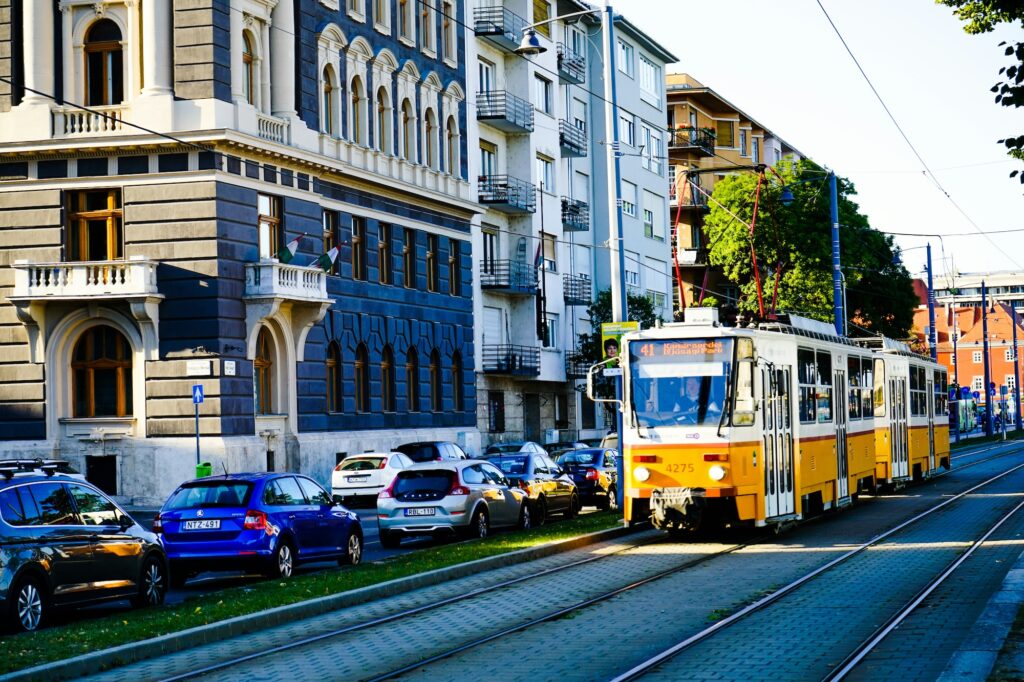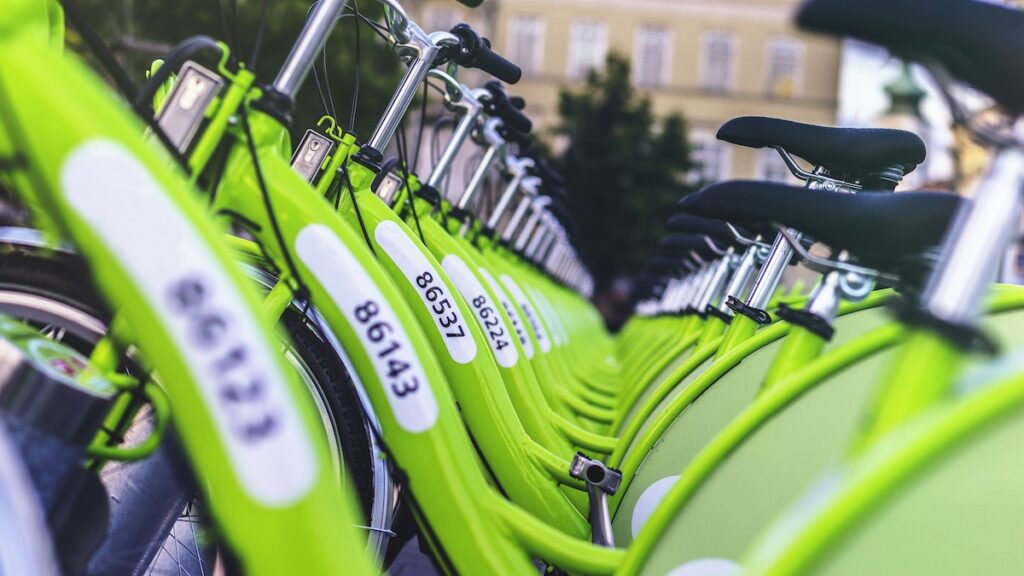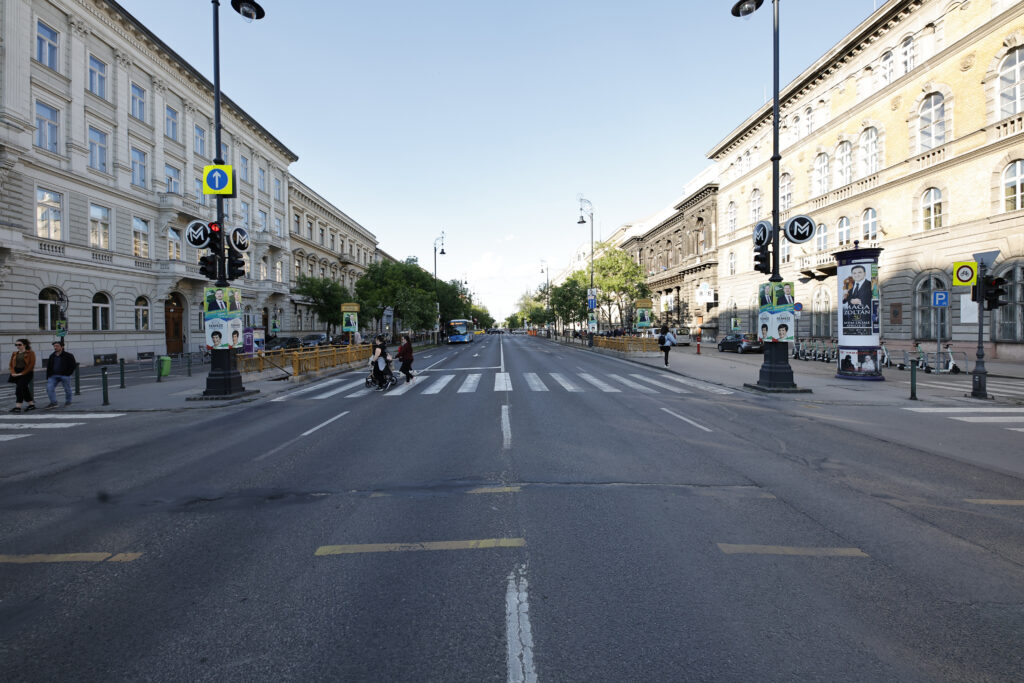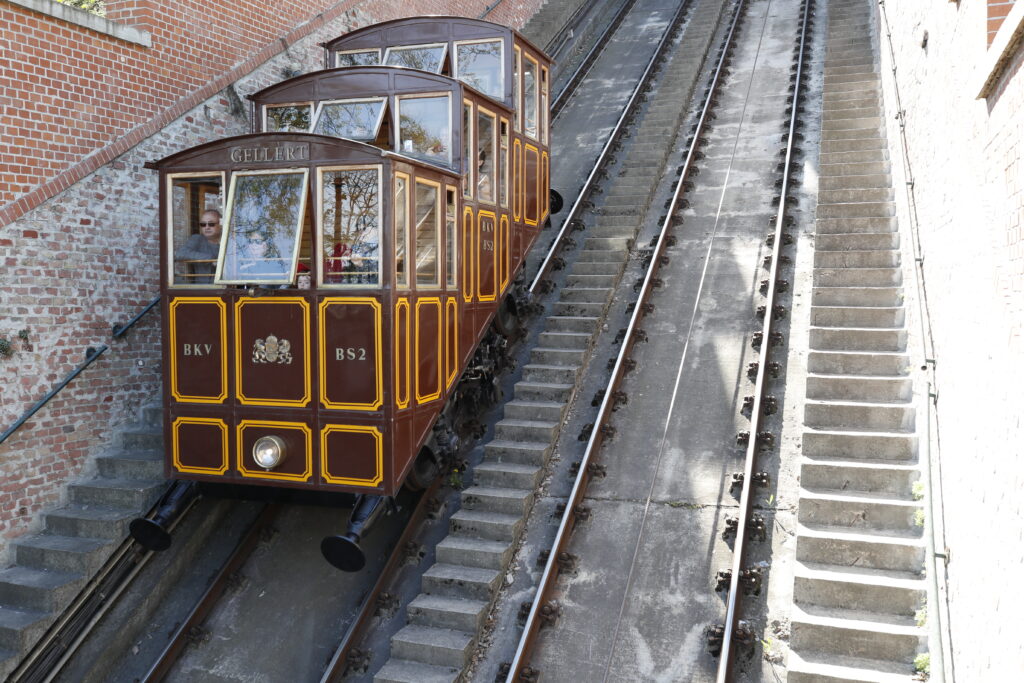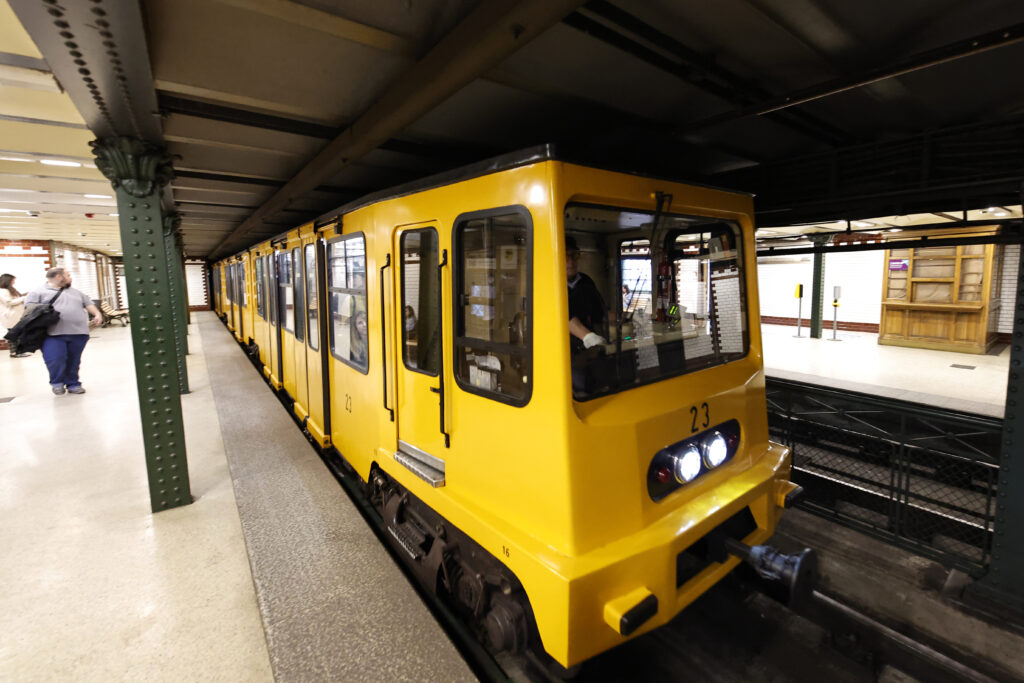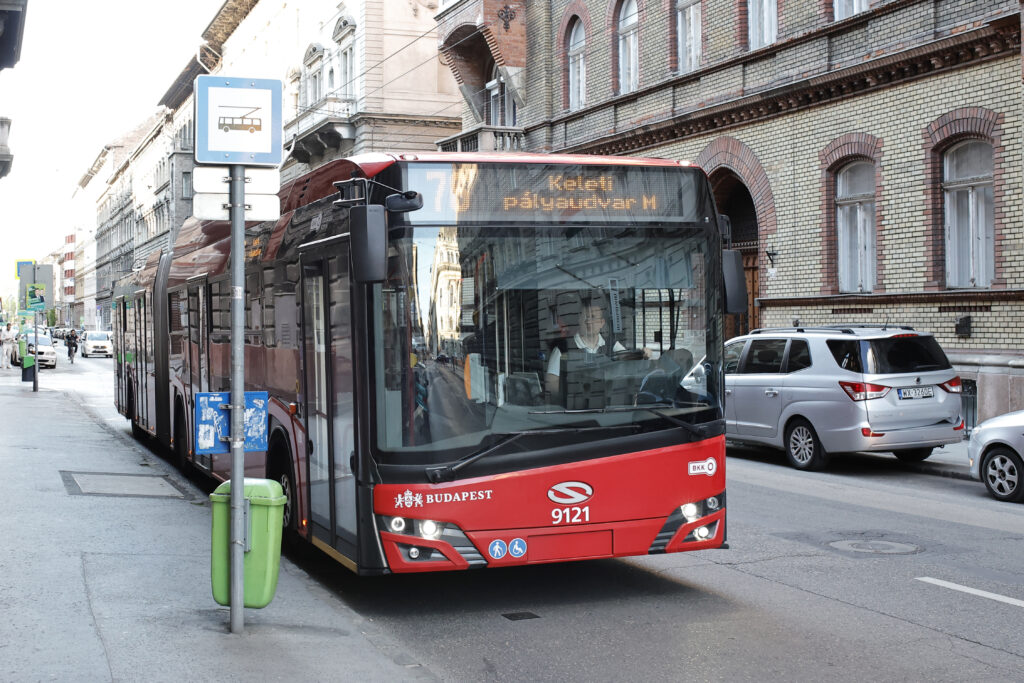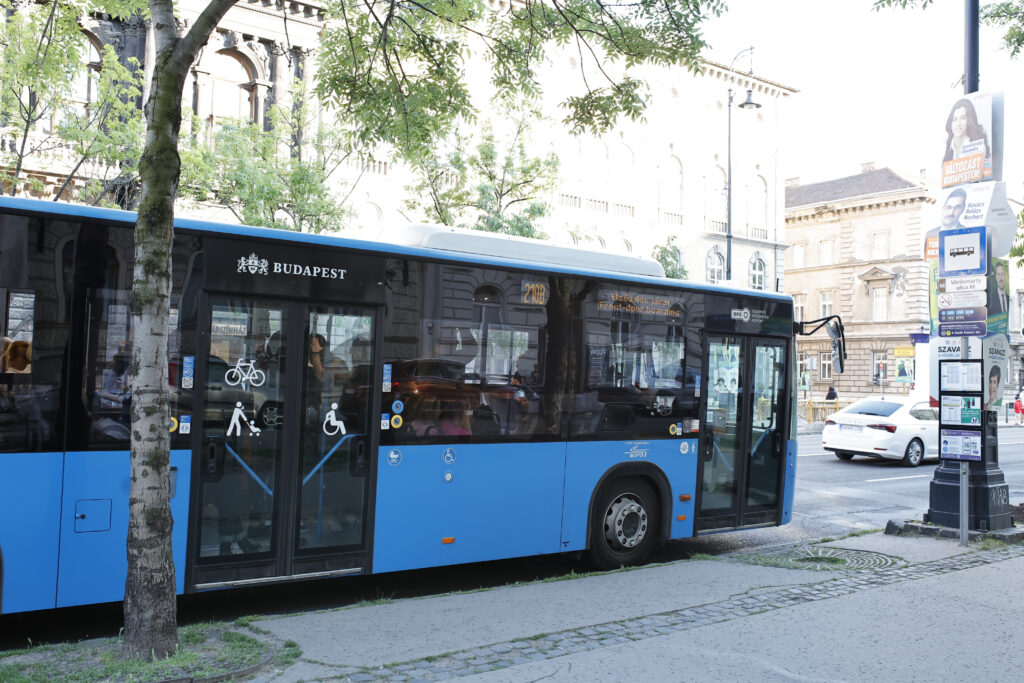A public transport monthly pass in Budapest costs 3450 HUF (8.8 EUR / 9.5 USD) for a student in Budapest. Tickets and passes can be purchased at ticket vending machines, ticket offices, and via the BudapestGO app. These can be used on every public transport vehicle, except for the special 100E Airport Bus, and on suburban railways outside of Budapest.
Tickets can be validated on public transport vehicles by inserting them into red or orange ticket validation machines.
The public transport system of Budapest consists of 4 metro lines, bus lines, tram lines, trolleybus lines, and suburban railway (HÉV) lines. These vehicles operate between 04:30 am and 11:50 pm every 5-15 minutes. Metros and trams are the quickest ways of getting around in Budapest.
Students can also travel at night by night buses and tram line 6 that operate at nighttime.
Alternatively, international students can get around Budapest using MOL Bubi public bicycles, e-scooters, and taxis.
How much does Public transport cost for a student?
A monthly public transport pass costs 3450 HUF (8.8 EUR / 9.5 USD) for a student. A single ticket costs 350 HUF (0.9 EUR / 1 USD), and a 10-block ticket costs 3000 HUF (7.7 EUR / 8.3 USD) for a student.
| Type of ticket/Pass | Cost in HUF | Cost in EUR |
| Single ticket | 350 HUF | 0.9 EUR |
| Monthly student pass | 3450 HUF/month | 8.8 EUR/month |
| 10-block Ticket | 3000 HUF | 7.7 EUR |
Please note that prices are subject to change, and it’s always a good idea to check the latest fares on the BKK (Centre for Budapest Transport) website.
Where to buy public transport tickets and passes?
Tickets and passes can be bought from 2 options: offline and online. You can buy paper tickets & passes from ticket machines all around the city. You can pay by card and in cash.
Some ticket offices (HUN: jegypénztár) still operate in Budapest. These are at the following locations.
- Blaha Lujza tér
- Corvin negyed
- Nyugati tér
- Népliget
- Széll Kálmán tér
The online option is the BudapestGO app, this is the recommended way of purchasing tickets. Download the app from Play or App Store, and you can immediately buy tickets, passes, and also 24/72-hour travel cards. This app also helps you in route planning providing real-time information.
You can use the standard tickets and passes on every type of public transport vehicle in Budapest. The only exception is the 100E Airport bus, which requires purchasing a special ticket.
How to validate tickets?
If you use a physical ticket, insert it into the red or orange ticket validation machines on board (or in front of the escalators at metro stations). A tiny green light and a short noise confirm that the ticket has been validated.
If you use a digital ticket, scan the QR code outside the public transport vehicle with your app.
Make sure to validate your ticket at the start of your journey!
Public transport system in Budapest
The public transport system in Budapest runs from early morning (around 04:30 am) until late at night (around 11:50 pm) on both weekdays and weekends. For those traveling after midnight, night buses provide public transport services until around 5 am.
Budapest has the following public transport types.
- Metro lines
- Trams
- Buses
- Trolleybuses
- Suburban railways (HÉV)
The quickest way of getting around Budapest is by using either the metro or tram. Buses and trolleybuses can get stuck in traffic, even though they have a dedicated lane in Budapest.
All vehicles run every 5-15 minutes, varying by line, type of transport, and operating hours, with more frequent service in the morning and afternoon. Public transport timetables can be found in the BudapestGO app and at every public transport stop.
It’s easy to get around the central parts of Budapest on foot. This is the best way of experiencing the true essence of Budapest! You can get to practically anywhere in the central parts of Budapest on foot in 15 minutes.
Metro Lines
Budapest’s metro system has four lines, each identified by a unique color.
- Metro Line 1 (Yellow): this historic line connects the city center with the City Park, stopping at key locations like Heroes’ Square.
- Metro Line 2 (Red): this line runs from the eastern to the western bank of the Danube. It stops at important places such as the Parliament and Keleti Railway Station.
- Metro Line 3 (Blue): the longest line, stretching from the northern district of Újpest to the southern part of the city, Kőbánya-Kispest. Important stops on this line include Kálvin tér and Nyugati Railway Station.
- Metro Line 4 (Green): this line connects the southwestern part of Budapest with the city center, stopping at stations like Kelenföld Railway Station and Fővám Tér.
Trams
Trams are an efficient way to travel around Budapest. They are all yellow and operate across the city, providing an excellent way to see Budapest’s beautiful architecture.
The most central tram lines include the following.
- Tram line 4-6
- Tram line 2 (voted as the most scenic tram route of the World)
- Tram line 1
Buses
Buses in Budapest are all blue and form an extensive network covering areas not serviced by the metro or trams. The most central bus lines include the following.
- Line 7
- Line 7E
- Line 8E
- Line 133E
- Line 110
- Line 112
- Line 107
- Line 108
These cover major routes all around the city, especially in an east-west direction.
Many buses require boarding through the front door only, indicated by signs on the bus and at stops.
Trolleybuses
Trolleybuses are identified by red color in Budapest. They offer another convenient mode of transport, especially in areas without tram lines. Like some buses, most trolleybuses require front-door boarding.
The most central trolleybus lines include the following.
- Line 72
- Line 76
- Line 83
Suburban railways (HÉV)
Suburban railways are green trains that connect Budapest with its suburban areas in the agglomeration. They are a good option for exploring outside the city.
You can travel by suburban railways with public transport tickets and passes only within the jurisdiction of Budapest. Outside of Budapest, you have to purchase additional suburban railway tickets. The cost depends on your destination (the further the costlier). These tickets can be bought in the BudapestGO app or at ticket vending machines.
Night public transport system in Budapest
Trams and metro lines stop operating around 11:26 pm Tram line 6 is an exception, as it runs 24 hours a day.
For those who want to party in the nightlife, night buses provide late-night travel options. These buses operate at less frequent intervals, every 30-60 minutes.
The most central night buses in Budapest include lines 907, 914, 950, 979, and 990. These routes ensure that students and residents can travel safely and freely at night around the city.
Alternative ways of getting around Budapest
Budapest offers several alternative travel options, including public bikes, e-scooters, and taxis.
MOL Bubi public bicycles
MOL Bubi, a collaboration between BKK and MOL, provides a public bike-sharing service that is quick, eco-friendly, and operates around the clock.
You have to register at molbubi.hu/en/ to use these bikes. Then you have to purchase a pass. There are 3 subscription options available for MOL Bubi.
- Monthly pass for 1000 HUF/month (2.5 EUR/month)
- Yearly pass for 8500 HUF/year (21.5 EUR/year)
- Pay-as-you-go system for 40 HUF/minute (0.1 EUR/minute)
MOL Bubi bikes can be found at several points in Budapest. A bike can be rented via the MOL Bubi application.
E-scooters
E-scooters are a new way of urban mobility in Budapest, offering a fast, green, and trendy way to navigate the city. Currently, there are 3 main service providers in Budapest.
- Lime
- Bird
- Tier
The system works similarly to MOL Bubi. You have to register on the service provider’s website, download the app, and then you can use the scooters.
However, this type of transport is expensive. The service providers offer different payment structures ranging from a pay-as-you-go system to daily tickets and monthly passes. A 10-minute ride costs around 1000 HUF (2.5 EUR / 2.7 USD).
The coverage within the city is also limited. You can ride with e-scooters mostly within the central districts.
Taxi
For longer distances or after parties in the nightlife, taxis provide a reliable solution. Here are the trusted taxi service providers in Budapest.
- Bolt
- Főtaxi
- 6×6 Taxi
- Taxi4
- City Taxi
- Uber
The cost of a taxi trip depends on your destination, but you can calculate it with the following costs.
- Base fare: 1100 HUF (2.7 EUR)
- Time-based fare unit: 110 HUF/min (0.27 EUR/min)
- Distance-based fare unit: 440 HUF/km (1.1 EUR/km)
Avoid freelance (unbranded) taxi drivers, because they are usually scams by trying to rip off tourists. Make sure to choose only from the previously mentioned providers!



